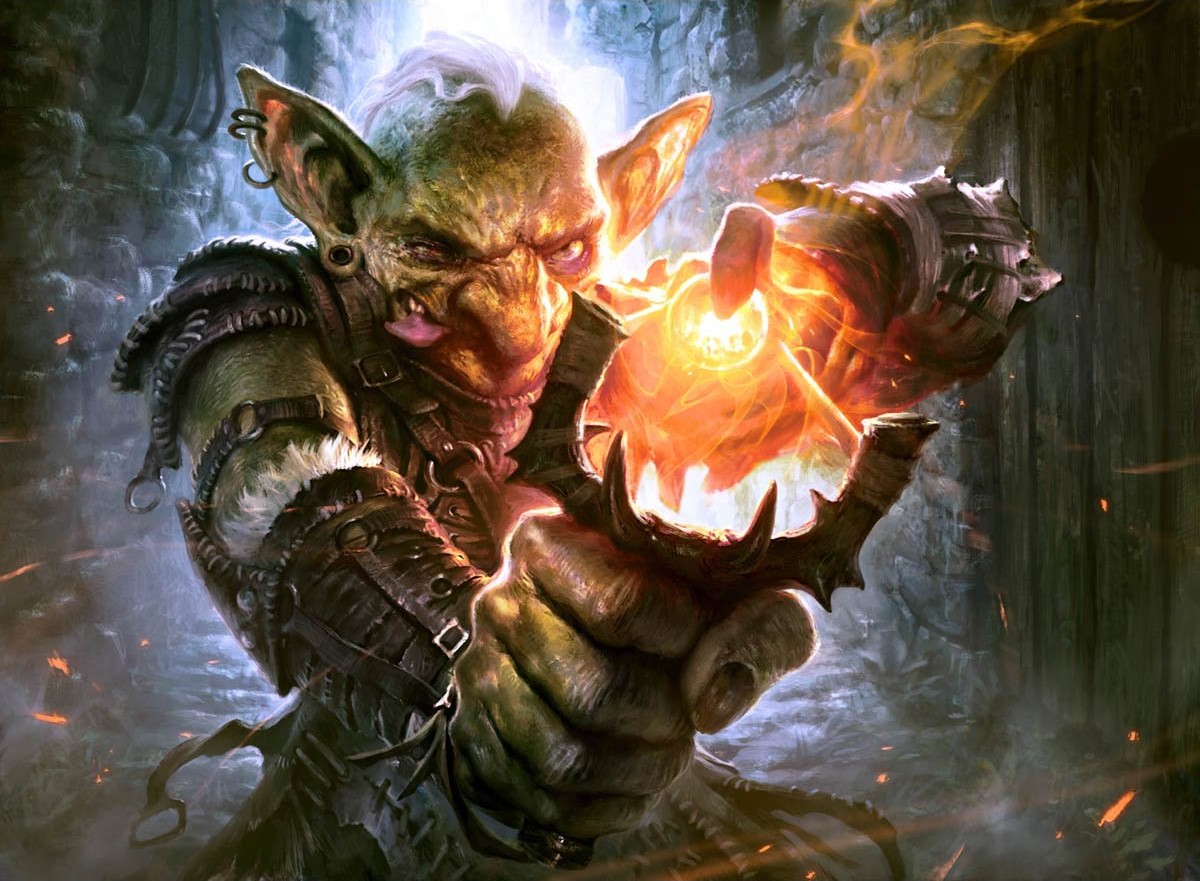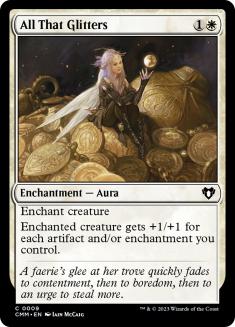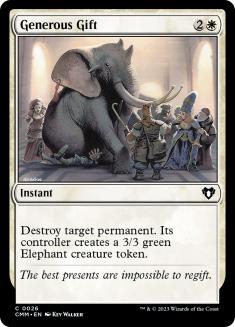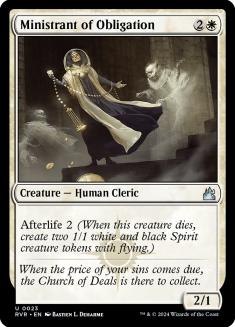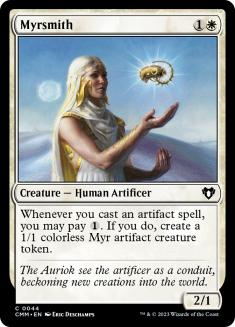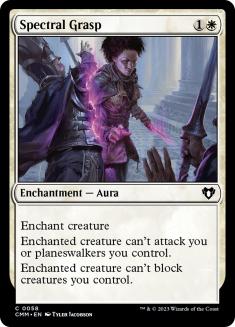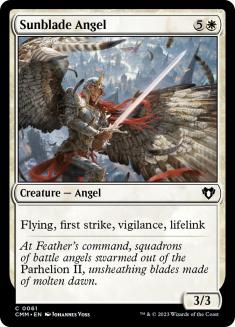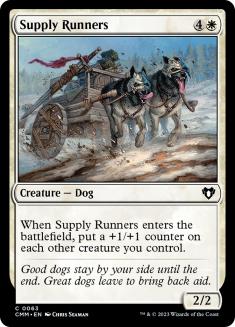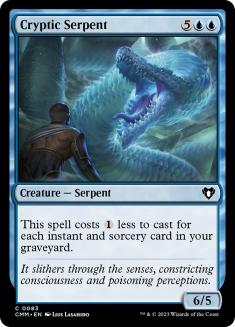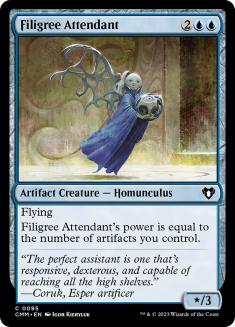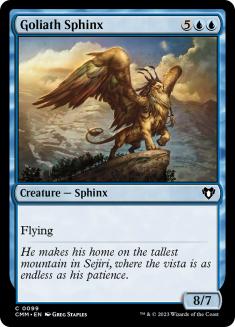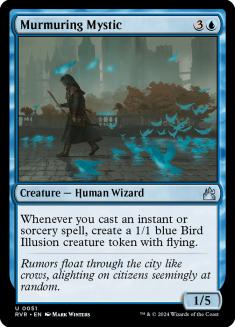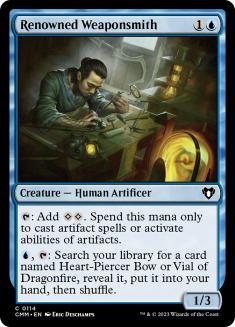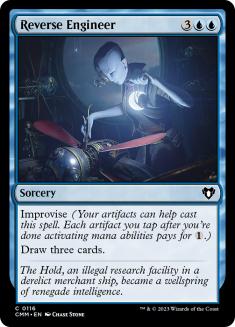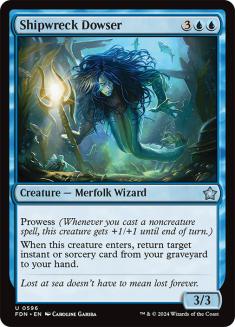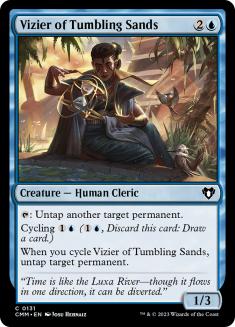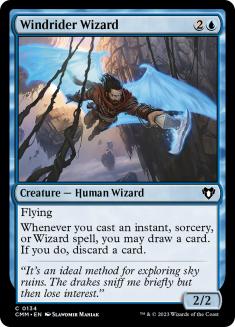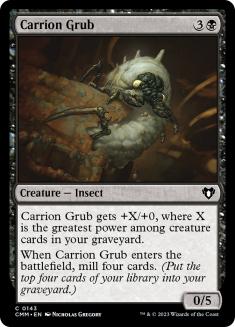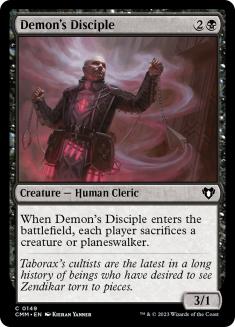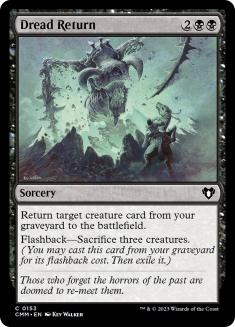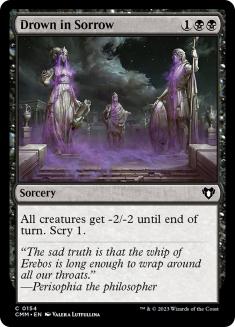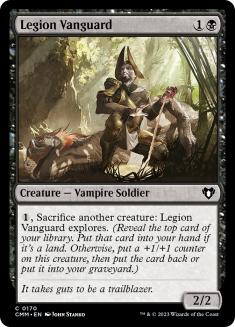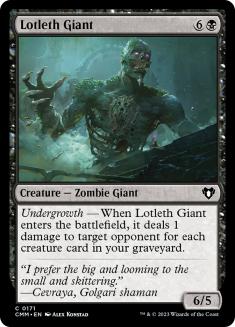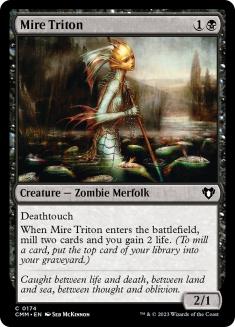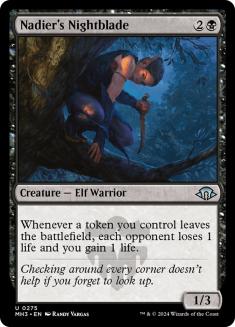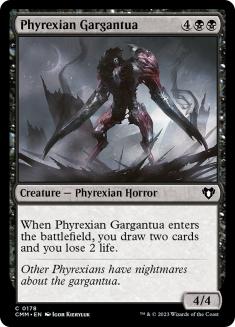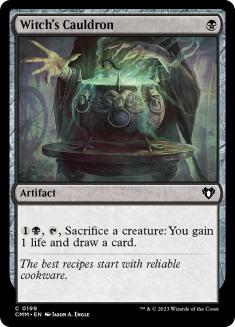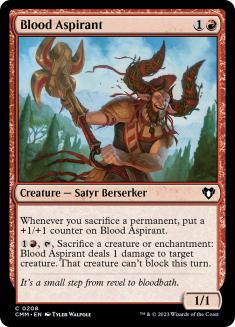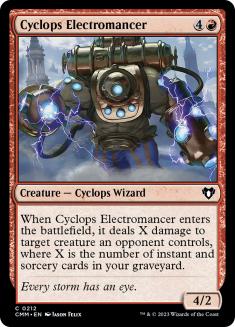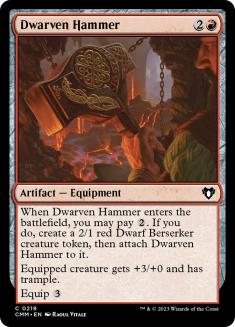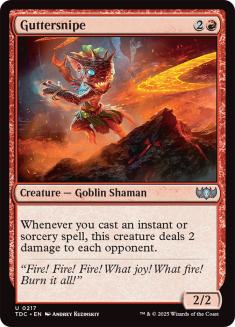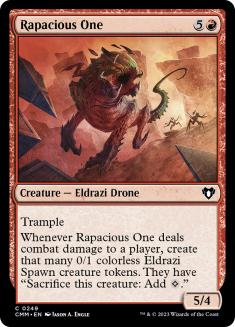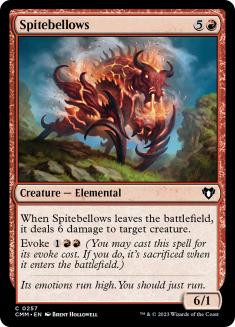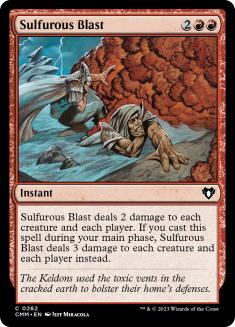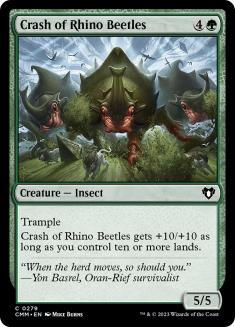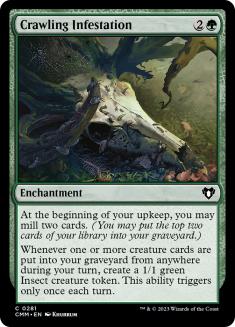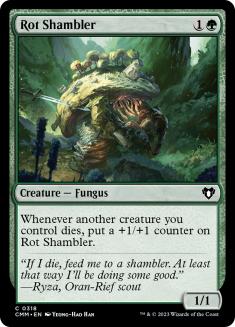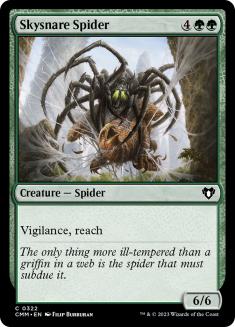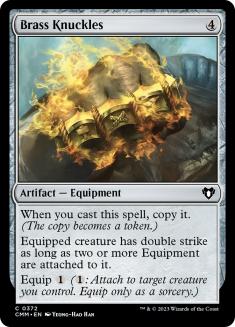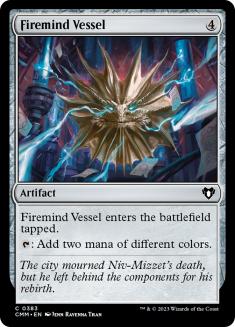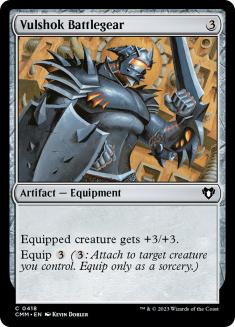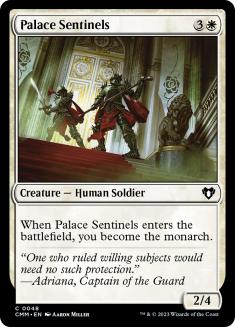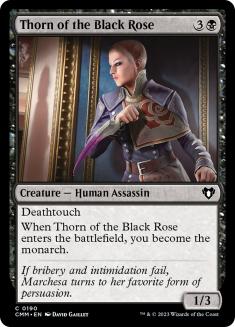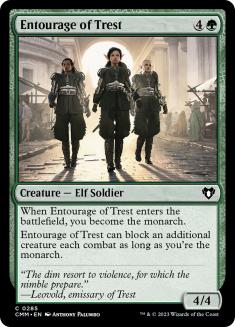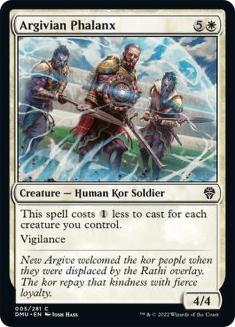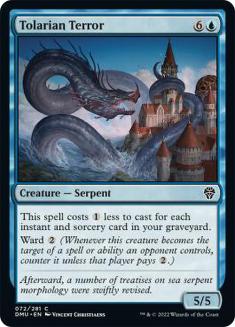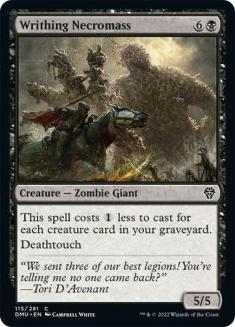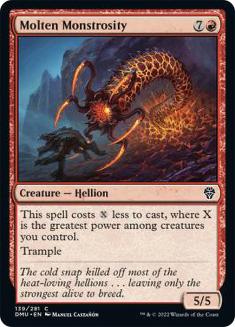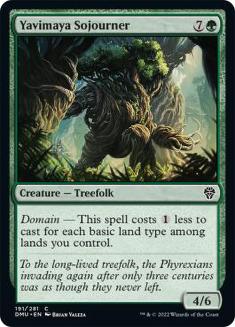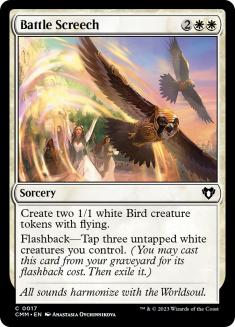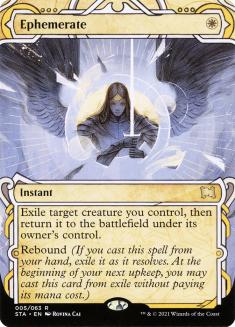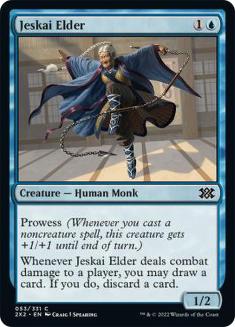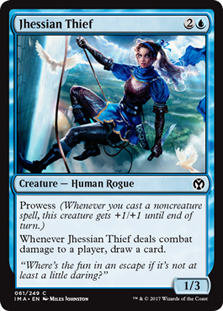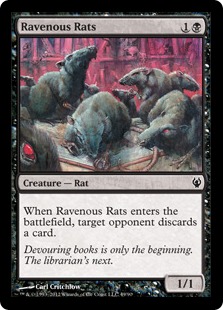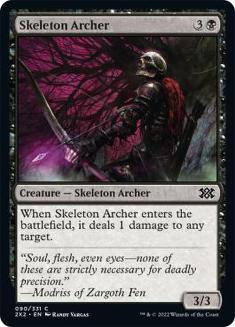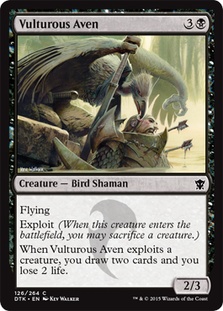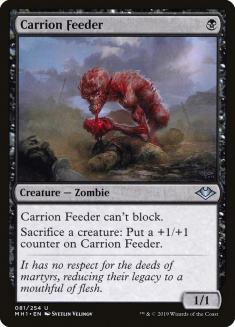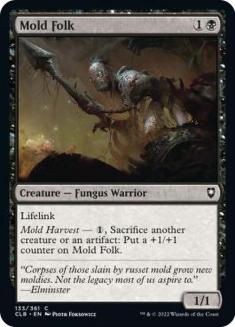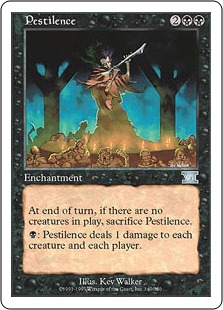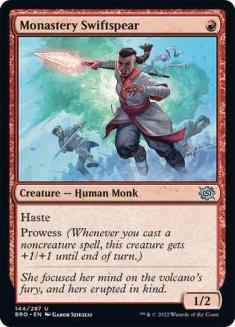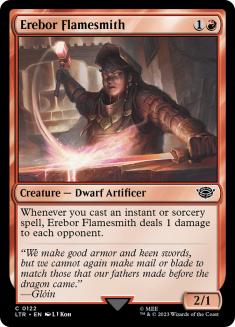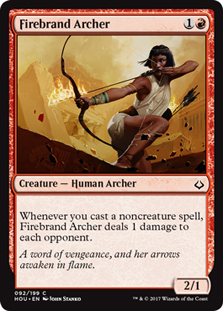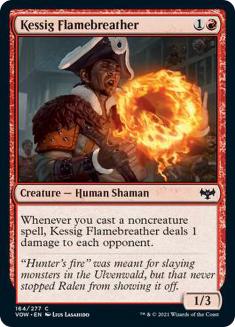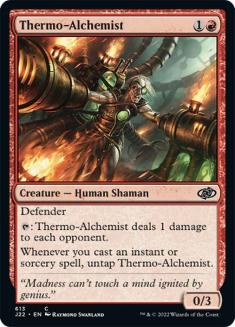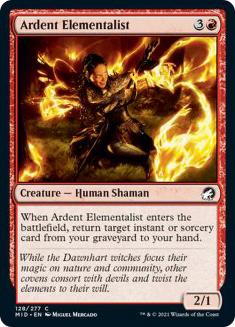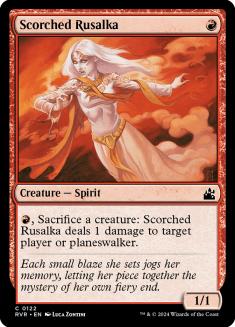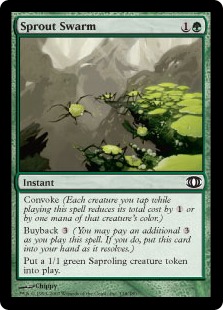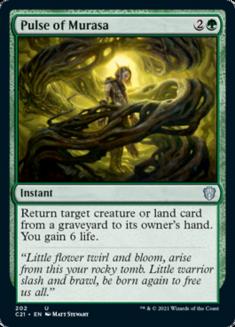Happy August, gamers! Commander Masters releases this week, and as the main set is all reprints, there’s not a lot to get excited about in the world of Cube. There’s no reason to do anything like a Top 10 list, but that’s not to say that sets like this contribute nothing to Cube. We’ve come to expect downshifts in rarity from Masters sets, and Commander Masters did not disappoint on this front! Today I’ll be going over some cards freshly printed at common as well as a recent massive update I made to my Pauper Twobert that features a handful of these downshifts. Let’s dig in!
The Downshifts
First, let’s take a look at every card downshifted to common with the release of Commander Masters and why that matters:
Downshifts are relevant for Pauper because all of these cards were previously considered too powerful and/or complicated to be printed at common. A downshift to common most loudly signals an increase in power level for the Pauper format, but it also can open up space not previously supported by only commons. Myrsmith, for example, opens up the possibility for more artifact support in Pauper. Murmuring Mystic is one of the most explicitly powerful “spells matter” cards ever printed at common.
Some cards like Goliath Sphinx could be printed at any rarity whatsoever with negligible impact in any direction, and a lot of this stuff is more for retail Limited or Pauper Constructed, but there’s quite a lot that matters for Pauper Cubes in this spread, too. By my estimation, this batch does a lot more for Pauper Cube in terms of new powerful tools that offer additional support to existing archetypes, with decks heavy on instants and sorceries and Sacrifice decks being the biggest winners. Green stands to gain the most in Pauper Cube, though unfortunately it gained the least with this update. Skysnare Spider is neat if the games are just about rate, but Shipwreck Dowser and Phyrexian Gargantua represent much more significant upgrades to the existing pool of commons with regard to generating the card advantage that games of Pauper are often about.
Before I get into how I updated my Pauper Twobert with Commander Masters, I want to discuss a couple other motivating factors for the recent changes that I made.
Dethroning the Monarch
Something that I’ve been looking to change for a while in my list was removing support for the monarch mechanic.
I like featuring some of the most powerful commons ever printed in my Pauper Cubes, but monarch and more recently the initiative has had me questioning my approach. There’s just a little too much going on that’s not printed on the individual cards, and these mechanics warp every game that they touch too much to feel especially cohesive in a world of only commons. I tested Fall from Favor very briefly and found it just too busted. Aarakocra Sneak didn’t interest me in trying it, flat-out.
I took my time actually replacing these cards, though, in no small part because I was removing two of the most powerful cards from two of the weakest colors, and that’s something I wasn’t terribly excited to do! On a walk recently I was listening to Mark Rosewater’s Drive to Work podcast, and his interview with Erik Lauer and Ian Duke on Dominaria United set design (Episode 968) gave me a lot to chew on regarding updating my Pauper Twobert.
United Inspiration
I loved Dominaria United Limited, so I wasn’t necessarily listening to the episode looking for any inspiration, but something that Erik said really stood out to me. It wasn’t any new information, but just the act of him talking through it out loud got my wheels turning. He was going over the way they built each color for the format and how they all had some big marquee common that told you what that color was about. In case you’re unfamiliar:
Each of these cards pretty loudly signals what its respective color cares about in that format, and at common, you were likely to see one without opening too many packs. In a singleton Cube, you can’t generally signal anything about a color this strongly with just one slot, but you can accomplish the same effect with a little redundancy.
Thinking about these cards in that format made me realize that the colors in my Pauper Twobert were just trying to do too many things. There were interactions that I liked and reasons I could justify every card, but I didn’t have a firm plan for the colors on the whole. It wasn’t that green and white didn’t have enough powerful cards to show up in meaningful ways; it was that I was trying to represent them with cards instead of with the broader architecture that it takes to build decks!
The Bigger Issue
The scale of that issue is even bigger than it might seem at first blush. My green column was rather incoherent, but it was also suffering from my blue column’s incoherence! Blue offered more reliable wins, but it was just doing too many things. Ninjas, creatures to blink, permission… all of the cards were good, but they pulled you in too many directions and if green is also pulling you in multiple directions, how do you do anything but just default to taking the most powerful individual cards and figuring things out from there?
It’s fine if that’s one approach, but players solve formats rather quickly if that’s the only approach. My goal with my Commander Masters update was to make every color more focused, and for them all to benefit from this, albeit in different ways.
With this update, I wanted to give each color not only a coherent identity for itself, but also one that easily allowed colors to blend into two-color decks. The idea that I had to accomplish this was to have each color exist on some extreme of two spectrums. Those are “aggro or control” and “creatures or spells”. This way, each color has two focuses and will be able to blend with any other color along the lines of whichever focus they have in common.
Focuses in Focus
For example, if one color has the identity of being creature-based aggro and another has the identity of being creature-based control, then that color pair is going to care about creatures a lot and whichever color is more represented (as well as the pilot’s preferences) will likely dictate whether it’s more aggressive or controlling. Somebody who loves spreadsheets could chart this sort of thing out, but what I really like about this paradigm is that it’s all really intuitive stuff within the game of Magic that plays smoothly without having to spend any time on an elevator pitch for the Cube.
It’s worth noting that some color pairs won’t have any overlap if they’re on opposite sides of both axes. This is where keeping a high power band and a number of individually powerful cards goes a long way. Aggressive spells-matter decks will still play Mulldrifter, and cards of that nature go a long way towards making any color combination viable.
With that all in mind, let’s talk about my updated list, which you can find on Cube Cobra here. The blog on the page tracks all of my changes over time, so my focus today will mostly be on the current philosophy of each color.
White: Creature Aggro
White’s greatest strength in Pauper is the ability to go wide, with Battle Screech and Triplicate Spirits being among the color’s greatest game-enders. On that front, I’m really happy that Commander Masters finally gave us a paper common printing of Battle Screech!
I’ve actually changed very little in my white column recently, and the aggressive focus of the color with a few meaningful ways to generate card advantage beyond token generators has done a lot for white in recent years. Supply Runners is a downshift that plays right into the color’s strengths and is a very welcome addition to the Cube!
Each color has a couple of cards that don’t play directly to its strengths still featured in the Cube, and it’s worth highlighting them specifically and discussing the purpose they serve. There are more mono-colored cards in this Twobert by volume than my other designs, to here’s room for some mono-color cards intended more for two-color decks. Ephemerate is pretty fiddly in a mono-white deck in this environment if you were able to draft it, but all of the nongreen colors offer some really busted combinations with the card!
Blue: Spell Control
I cut a ton of creatures from blue with my recent update, and the downshifts in Commander Masters made this really easy to facilitate. It didn’t make too much sense to try to connect with Ninja of the Deep Hours when green is so long on creatures that more easily replace themselves, but it makes a lot of sense to play cantrips, counters, and large creatures that get better when your deck is full of cantrips and counters!
Jeskai Elder and Jhessian Thief are more combat-focused than anything else going on in blue. They’re solid blocks against a lot of what’s going on in the Cube, but more than that, they give you some aggressive angles to take your blue decks. This will come up in Izzet decks more than anywhere else, but there’s plenty of reason to play Jhessian Thief in a Dimir deck, too.
Black: Creature Control
My black column always had a lot of heavy-hitters, but a handful of cards never quite made sense. Moan of the Unhallowed was theoretically powerful, but it never performed in any meaningful way. I adore Gurmag Angler, but the Pauper Constructed all-star felt lacking here. Phyrexian Gargantua is an awesome downshift for the color, and highlighted what I should have been doing with the less desirable black slots all along: more creatures with enters-the-battlefield abilities!
Carrion Feeder and Mold Folk don’t fit into the mono-black plan especially well, but they are strong elements of any black aggressive deck, especially when you combine them with all of the white tokens or green cantripping creatures.
Pestilence is a quirky element in the Cube that is either busted on rate or worthless, given the way many of black’s other great cards cost life, too. My attachment to it is mostly driven by my owning a Beta copy, and I could see cutting it for Evincar’s Justice or just eschewing such a slot entirely being a more enjoyable play experience for some groups.
Red: Spell Aggro
Red has less of a skew towards spells than blue in absolute terms. Once you take a look at the spread of creatures, though, you can see that the color wants to play a lot of instants and sorceries!
You could shuffle all of the red cards in the Cube together, and you’d end up with a very coherent deck. Rolling Thunder is certainly more of a controlling card than an aggressive one, but I can’t imagine cutting it from any red deck. Faithless Looting is mostly powered by bouncelands, but it’s quite good in any game where you flood, and red decks in this Cube tend to have quite low mana curves.
Detours
I got it in my head a little while back that I wanted to try to make the Cube more about combat. I tried out Kiln Fiend and some similar cards, and they mostly only succeeded at making red much weaker as a color. The printing of Erebor Flamesmith gave the color more redundancy in the department of spells-matters creatures that didn’t have to make dicey attacks, and the downshift of Guttersnipe to common really drove that home. I added Apostle’s Blessing and Mutagenic Growth to the Cube partly to benefit the Kiln Fiend slant that I tried, but I found that they actually just play well in the Cube at large, and they stayed while the fragile creatures left.
I’ve tried varying amounts of Sacrifice support in this Cube, and while I’ve never been able to make a Sacrifice deck really hum, I have found a handful of Sacrifice cards that really stand out. I touched on this a little in black, and Scorched Rusalka is the all-star in red. It’s more of a Boros card than anything with all of the token generators, but I’ve never benched it in any of my red aggressive decks.
Green: Creature Aggro
And finally we come to green, which gains no cards from Commander Masters in my Cube. Even still, I changed a considerable number of green cards to give the color a more consistent identity. No more cute stuff like Satyr Wayfinder to try to mill Mother Bear. Just good rates like Mire Boa and River Boa to pick up a Rancor and get busy!
Green and white are the two most aligned colors in the Cube, with both being focused on creatures and aggro, and while both colors clash significantly with blue’s spell-based control focus, green is more at odds with blue than white is. Young Wolf and Elvish Visionary just don’t have a lot of overlap with Shipwreck Dowser and Tolarian Terror. Even still, there are enough generically powerful blue and green cards that there is reason to explore drafting Simic.
Sprout Swarm is among the most powerful cards in the Cube, after all. Pulse of Murasa also doesn’t do all that much with just the green cards in the Cube, but when it’s picking up Archaeomancer, it can effectively lock out games.
I’m really happy with the shape of my Pauper Twobert after this update, and the downshifts from Commander Masters contributed in significant ways to the changes that I made. I hope this article gave you some food for thought, either about Pauper Cubes or just the new philosophy I have around this specific design. Next week, I’ll be breaking down an update to my Peasant Cube in very similar fashion, so if you like what you read this week, definitely come back for that one!

